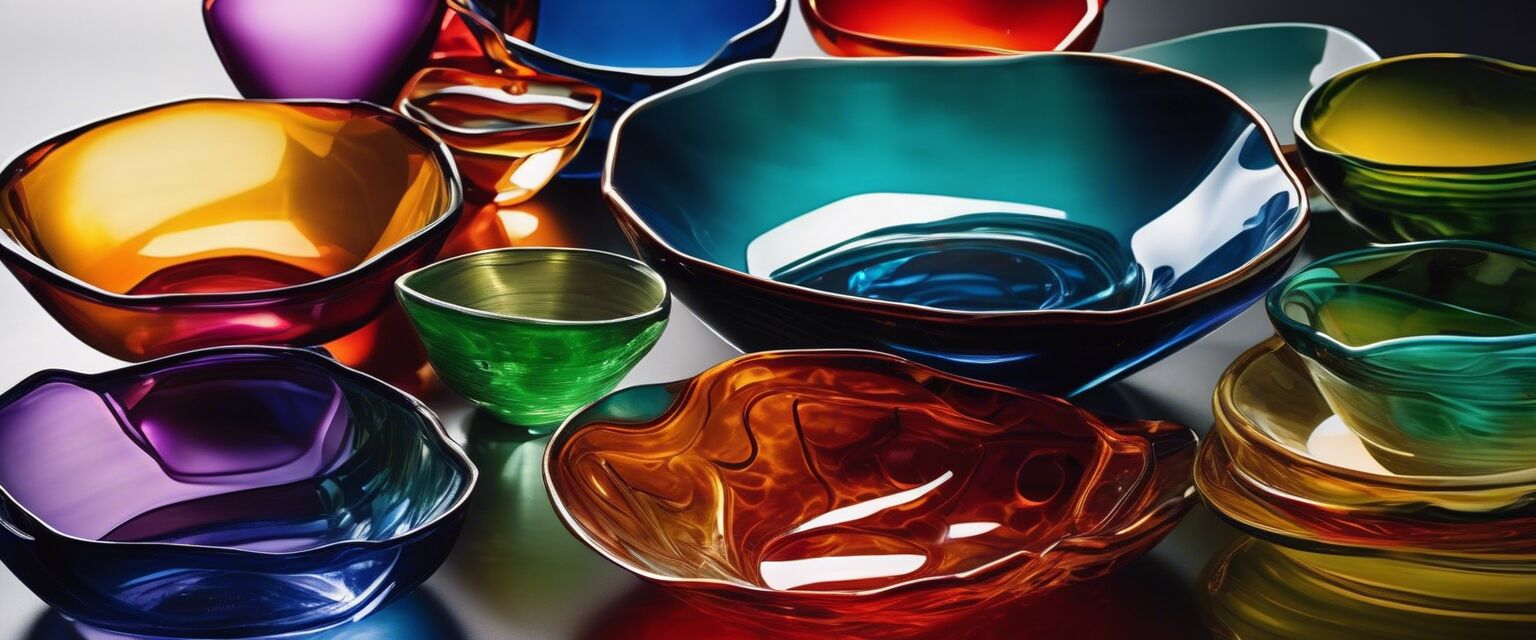
Using Glass With a Purpose: Functional Art Pieces
Key Takeaways
- Functional glass art blends beauty with usability.
- Create unique items that serve practical functions.
- Experiment with various glass materials like sheets, frit, and rods.
- Learn different techniques such as fusing and slumping.
- Explore the potential of glass as an expressive medium with daily deals on supplies.
Creating functional glass art pieces allows artists to blend beauty and usability, transforming everyday items into stunning expressions of creativity. Whether you are an experienced glass artist or a beginner, understanding the methods to create these pieces can enhance both your art and your daily life. In this article, we will explore techniques, materials, and ideas for crafting functional glass art.
The Beauty of Functional Glass Art
Functional glass art combines aesthetic appeal with practicality. Items like glass bowls, serving platters, and decorative vases not only serve a purpose in our homes but also add character and individuality. This blending of utility and beauty makes glass an ideal medium for creative expression.
Why Use Glass for Functional Art?
- Versatility: Glass can be shaped into numerous forms, providing endless possibilities.
- Aesthetic Appeal: The unique properties of glass create beautiful, vibrant colors and textures.
- Durability: Well-made glass items can last for years while retaining their beauty.
Materials for Creating Functional Glass Art
The foundation of any glass art project lies in the materials you choose. Here are some essential materials used in the crafting of functional glass art pieces:
| Material | Description |
|---|---|
| Colored Glass Sheets | Available in various hues, these sheets can be cut and shaped to create vibrant art pieces. |
| Frit | Small pieces of crushed glass come in multiple colors, perfect for adding texture and detail. |
| Rods | Thin glass rods can be melted and shaped, ideal for intricate designs and fine details. |
| Molds | Silicone or metal molds help form glass into specific shapes. |
Techniques for Crafting Functional Art
Understanding different techniques will allow you to effectively incorporate functionality into your art. The following methods are common in the creation of functional glass pieces:
Fusing
This technique involves layering pieces of glass and heating them in a kiln until they bond together. Fused glass can be used to create dishes, tiles, and decorative pieces.
Slumping
Slumping involves heating a flat piece of glass until it softens and then allowing it to sag into a mold, creating shapes like bowls or platters.
Casting
For a more advanced technique, casting involves pouring molten glass into a mold to create solid objects, such as sculptures or unique serving pieces.
Inspiration for Functional Glass Art Pieces
When thinking about what types of functional glass art to create, consider the following ideas:
- Unique serving platters for entertaining
- Customized glass bowls for home décor
- Artistic vases for personalized gifts
- Glass coasters with decorative designs
- Window hangings that catch the sun and add beauty to your space
Where to Find Glass Making Supplies
If you're inspired to start your functional art journey, make sure to explore various suppliers that offer a wide range of glass making materials. Check out the following categories to stock your studio:
- Glass sheets and supplies: Find colored glass sheets and other essential items.
- Fusing and slumping supplies: Gather materials specific to these techniques.
- Kiln accessories and tools: Ensure you have the right tools for your kiln.
- Glass molds: Explore various molds that suit your projects.
- Glass art project kits: Perfect for beginners and structured projects.
Conclusion
Creating functional glass art pieces is a fulfilling way to combine artistry with practicality. With the right materials and techniques, you can transform ordinary objects into beautiful works of art. Dive into the world of glass making and let your creativity shine through everyday use. Want to get started? Check out our extensive collection of supplies and find daily deals that fit your needs.
Pros
- Creates unique pieces that offer both beauty and functionality.
- Wide variety of materials and techniques available to explore.
- Opportunity to express creativity in practical items.
Cons
- Requires initial investment in tools and materials.
- Some techniques may require advanced skills and practice.
- Safety precautions needed when working with heat and glass.

